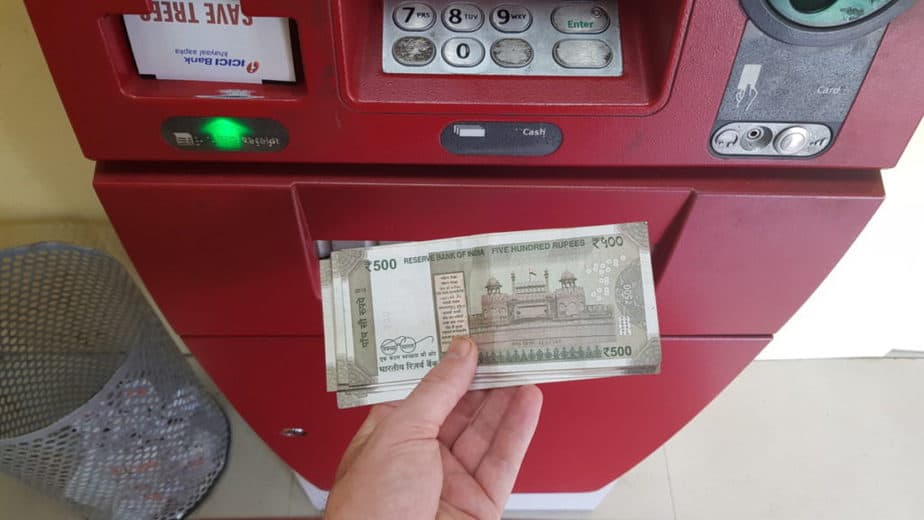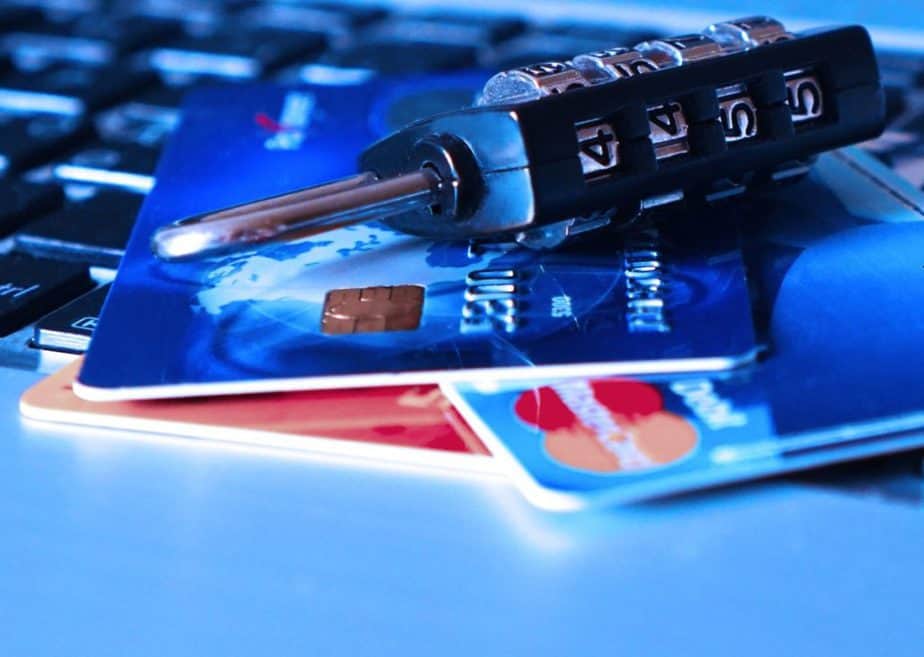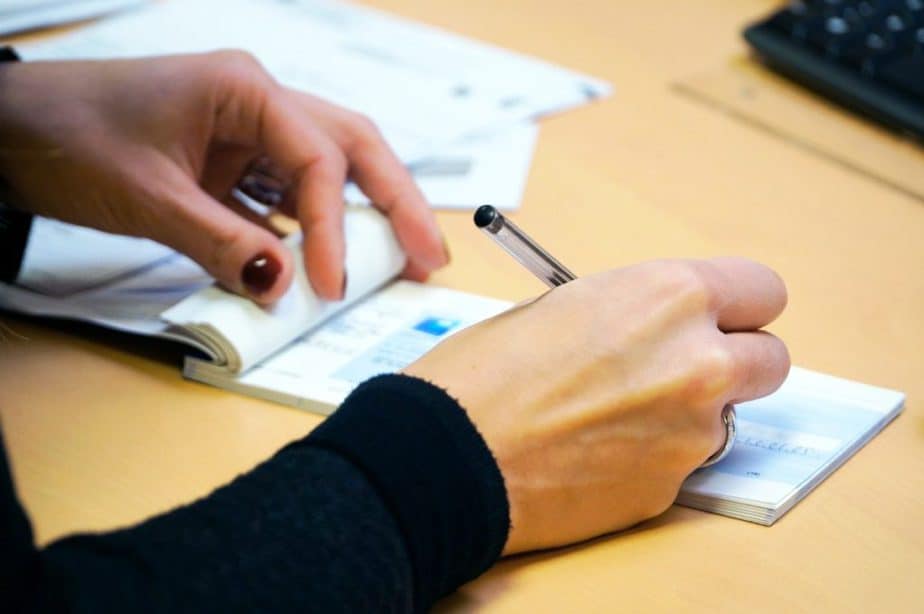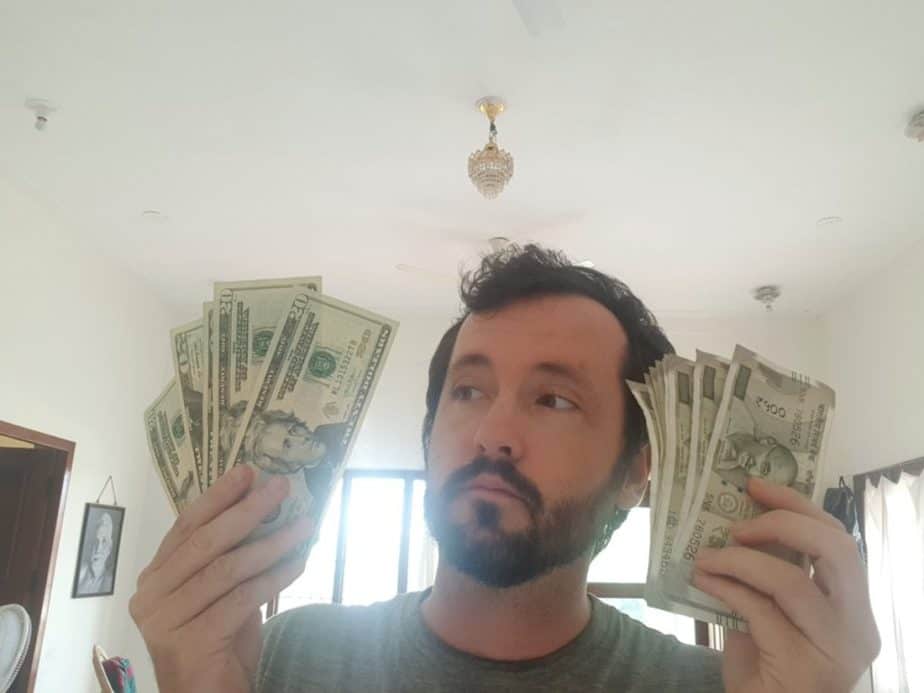Disclosure: Some of the links below are affiliate links, meaning, at no additional cost to you I will earn a commission if you click through and purchase.
Before I came to India, I was wondering how I would get the money I need to buy stuff. Did I need to bring a lot of US dollars? Should I bring traveler’s cheques? Did I need to convert US dollars to Indian rupees in advance? And does India accept US Dollars?
Most retailers in India do not accept US dollars, so you need to change your money to Indian rupees. Or for a better rate, use an ATM. Some large hotels or retailers are authorized to accept US dollars, but it’s only a small percentage so it’s better to pay with Indian rupees or your credit card.
When I was preparing to come to India, I found that a lot of the information I read online was false. For instance, some articles might say that you’d bring in a lot of US dollars, then exchange them once you arrive. Or you might want to convert your local currency (if it’s not USD) to US dollars.
I’ve been living in India now for about a year, and here’s what I’ve been telling my family as they prepare for a trip soon:
It’s Illegal for Shops to Accept US Dollars in India

Shops, restaurants, and hotels can NOT legally accept US dollars. A business must get legal authorization to accept dollars, which only the largest and most touristy places might do.
This law is in place to prevent this money from being used for nefarious purposes like black-market activities or terrorism.
However, it could just be where I am living in India, but it does seem like the restaurants, hotels and shops are motivated to get my business so they might exchange money for you without authorization.
For instance, as I’m typing this in a popular restaurant, I asked if I could pay with US Dollars. They said that I could exchange US dollars here. I asked them how they figured out the rate. Apparently one of the employees will set the rate each day. 🙂
I also exchanged some USD with my landlord. He’s not an approved or authorized vendor, but he’s a motivated businessman and we did some negotiating to come to an agreement. I just googled rupees to USD, and negotiated to get the price as close to that rate as I could.
Should You Bring US Dollars To India?

If you’re from the US, then it is okay to bring in some US dollars. I brought in $250 USD when I arrived as a backup. I then exchanged $150 USD and I keep $100 USD around, in case I need it.
But if you’re NOT from the US, there’s no need to exchange your currency to US dollars. I mention this because some articles advise you to change your money to USD for better rates and access.
This would be a mistake because any authorized foreign currency exchange center will be able to change your currency. They also use set rates based on the stock market.
Plus, you would be losing money. You would have to pay to change your currency to USD. Then pay again to change your currency from USD to Indian rupees (INR). If there is a better rate for USD than other currencies, this double exchange fee would negate any savings you make.
Bring some of your local money as a back-up, but you will be able to convert it at legit currency centers and banks in India.
Quick Note – Sending and Receiving Money Internationally:
One way I handle transferring money internationally is by using Wise, formerly Transferwise since they have low fees and it’s super easy to do with just my email address. I’ve had friends reimburse me and saved thousands with recurring payments from US clients.
If you are looking to send money abroad, it’s a great tool — much cheaper than using your local bank. You can also get your own local bank account details in Europe, UK, US, Australia and New Zealand with the Wise Borderless account.
Also, Indians can now transfer money in rupees to 40+ countries.
To learn more, check out the details here.
ATMs Are Better Than Exchanging Money Anyways

ATMs will give you a 2 to 7 percent better rate than foreign currency exchange centers.
You’ll get even worse rates exchanging your money in touristy places like the airport, so find an ATM instead.
ATMs are everywhere in India, even in small towns, you will find plenty of ATM options.
I have spent much of my time in an Indian town with ~150,000 people. You can drive from one end to the next in about 20 minutes, but there are many ATMs close by.
You will want to come prepared though…
Bring Multiple ATM Cards and Credit Cards

I was in Bangalore recently and I had to go to three ATMs before I could withdraw money.
Indian ATMs are notoriously picky. Sometimes they are out of currency. Sometimes there is a long long. More often, they just won’t accept my international ATM card for some reason. Other travelers have expressed similar troubles.
To prepare, I have five ATM cards. I mostly use only one, but I have a good back-up. Then three other options if I get desperate. This increases my odds of being able to withdraw money, yet as my Bangalore experience tells, it’s still not 100% certain.
I use cards that have no ATM fees, or reduced ATM fees. Here are the ATM cards I use:
Radius Bank: Doesn’t charge ATM fees and refunds any ATM fees that the ATM charges. There is a 1% foreign transaction fee though.
Varo Bank: Doesn’t charge ATM fees and doesn’t have any foreign transaction fees. I do get charged a fee by the ATM I use though.
Chime Bank: Has a $2.50 ATM fee, but doesn’t charge any foreign transaction fees.
I have a couple of other cards as well, but I avoid them. Bank of America will charge me $5 for a foreign transaction at a non-Bank of America ATM. Plus, the ATM charges a fee, so I have paid ~$10 to use the ATM before 🙁
Visa and Mastercard are the most widely accepted credit cards. Most hotels, restaurants, and shops will accept them.
American Express is also accepted in many places.
I use Discover card and it’s also accepted in many places and doesn’t charge a foreign transaction fee.
I was at a hotel recently that charged me 3% to use my credit card, however this seems rare.
It is why I usually carry cash *and* cards with me for options though.
Bring in some Indian Rupees

There is false information online saying that you can NOT bring Indian rupees into India. When in fact, you can bring them in.
The customs regulations state that any traveler (Indian or otherwise) can bring in 25,000 rupees into India without declaring them to customs.
While there is no need to do this step, if you would prefer to be prepared then you can bring some Indian rupees
In the US, AAA will exchange USD for Indian rupees. AAA allows you to purchase 80 foreign currencies and Indian rupees are one of them.
Your local bank might as well.
Do You Need Traveler’s Cheques?

My mom asked me this question, and I realize this was once a required part of your travel preparations.
You do NOT need traveler’s cheques though.
If you want to have another option for money, then traveler’s checks can be a solid backup. Unlike cash, they’re worthless if stolen. Plus you can get a refund if they are stolen.
But they also cost you money if you do not have an American Express or AAA card.
I have never bothered to get them, but if you want to carry extra cash and are worried that your ATM cards won’t work, this is an alternate option.
You can ask at your bank or AAA to buy American Express traveler’s cheques.
Review: Checklist of What Financial Options You Should Bring To India

- $250 of your local currency. If that’s US dollars, then great but other currencies are good too.
- Multiple ATM cards. I’d bring at least 3.
- Multiple credit cards. I only have one and I wish I had two. Next time I go to the US, I will get a Visa or Mastercard.
If you want to be truly prepared, then bring in:
- 25,000 rupees (~$350 USD according to the exchange rate as I’m writing this)
- Traveler’s cheques
Also, you will want to sign up for Wise, formerly Transferwise as a way to easily send and receive money with the lowest fees that I am aware of.
You can see the current fees and sign up here.
Related Questions:
What Currency is Accepted in India?
The Indian Rupee. It has Gandhi’s face on every bill and dates back to the 6th century BCE. 70 rupees is currently worth about $1 USD.
What’s the Best Currency To Take To India?
Your local currency. Some people say that you can get a better rate of exchange for US dollars in India, however, if you go to an RBI-approved foreign currency exchange center you will find competitive rates on all currencies. Plus, if you exchange your local currency to USD, then USD to INR (Indian rupees) you will be paying double the fees.
How To Exchange Money in India?
Go to an RBI-approved foreign currency center or bank. The Reserve Bank of India (RBI) is the official bank and will guarantee you’re getting a rate that is legal. You may find other exchange centers in tourist areas, however, if they are not RBI-approved you can’t be sure you will get a fair rate… or that the center isn’t using your money for nefarious purposes.
Can You Take Rupees Into India?
Yes, anyone can take 25,000 rupees into India without declaring them to customs. You can take more as well if you declare them.
How To Get Cash in India?
ATMs are the best way to get cash in India. They will give you a better rate than foreign currency exchange centers and banks. Plus, ATMs can be found all over the place, even small towns and some villages.

